Jasmine Birtles
Your money-making expert. Financial journalist, TV and radio personality.

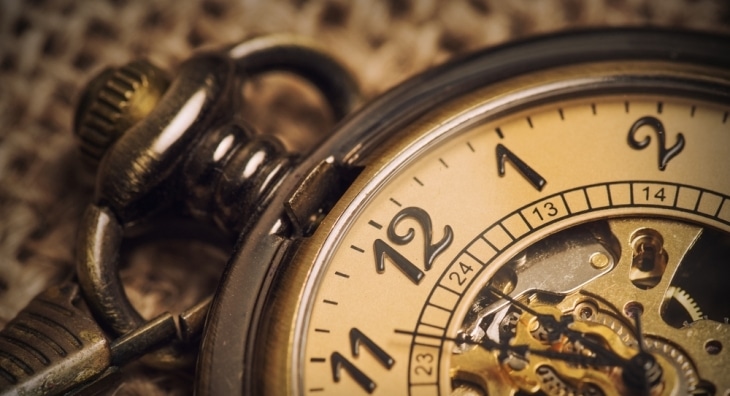
Like a bargain? Excited by the idea of buying and selling collectable antiques? Already enjoy browsing specialist forums and scouring eBay? Then buying and selling second-hand watches could be for you.
We’re going to give you a shortlist of the most important things you need to know about buying and selling second-hand watches. Then we’re going to conclude with a specially tailored MoneyMagpie route in; the path that generates the most profit with the most ease. With this article we want to inform you about the second-hand watch trade so you can grab a bargain, if you can spot one.
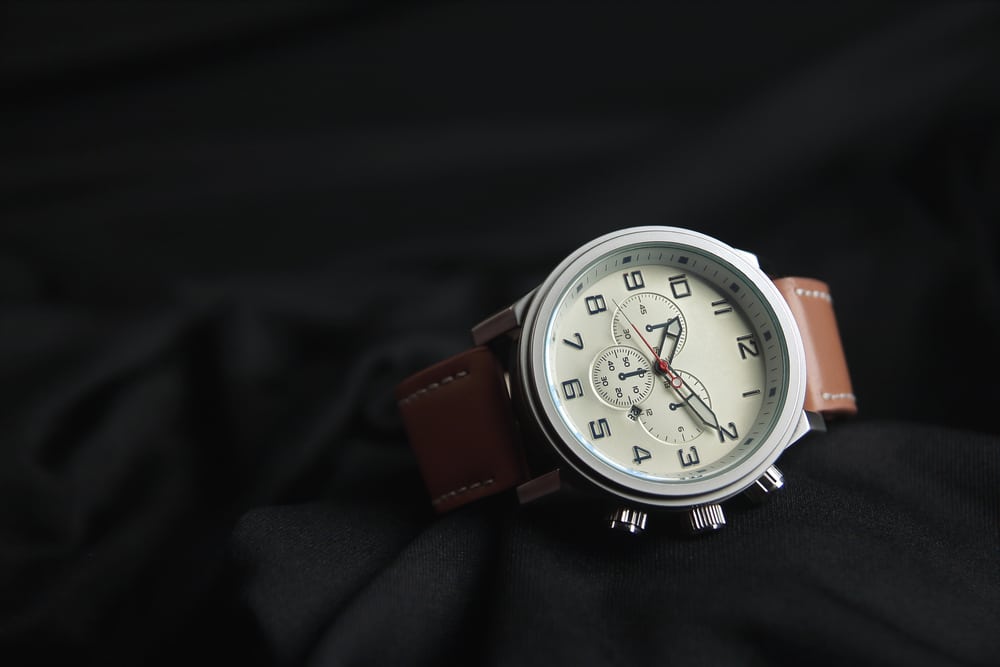
Watches walk the line between fashionable and functional. Those made in the last century are very collectable and are often produced in small or limited editions. Watches use intricate engineering to unite the reliability of sophisticated equipment with the refined timeless style of a designer. They are signifiers of wealth, of power.
Put simply, a ‘complication’ is any additional function on a watch other than telling the time. These can range from as simple as an AM/PM indicator or to as complex as a helium escape valve for deep sea diving. A good piece of lingo is knowing chronograph is just a watch with a stopwatch. As a general rule of thumb, a watch’s value increases with its number of complications, but the more things likely to malfunction, and the harder they are to fix.
A watch’s ‘movement’ is what powers it. Modern movements fit inside a watch’s case and can be divided into three groups; mechanical, automatic, and quartz. Quartz watches are powered by a battery; automatic watches are powered by movement; mechanical watches are wound. Look at the second-hand of a watch. Does it tick? -It’s a quartz watch. Does it sweep? -It’s either a mechanical or automatic watch. In terms of moving parts, mechanical and automatic watches are much more complicated and as such they require a more complex service. However, it is mechanical watches, with their traditional movements, that are held in highest regard by collectors, and command the higher price. In the normal run of things watches require services every 4-5 years. This takes at least four weeks to complete and involves a complete disassembly of the watch’s movement.
If you want to know more about the inner workings of watches read Michael Fraser’s Wrist Watches Explained (Vyiha, 2016).
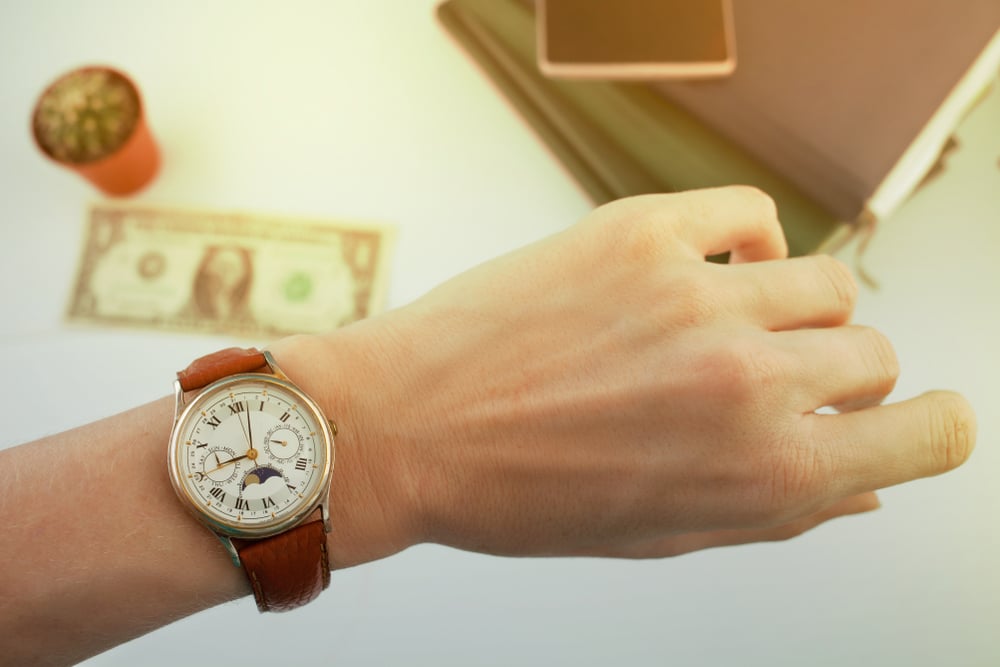
The second-hand watch market follows the same rules as a collectable market; fashion and scarcity governed and legitimised by the underlying prospect for investment.
According to UK tax law watches are seen as ‘wasting assets’ and for non-traders their appreciation isn’t taxed under Capital Gains tax. This is important to note as it has encouraged and justified heavy investment into watches.
As these pieces can be considered investments, they’ll always hold a base value; investment pieces create an economic situation in which goods are bought up, become scarce, and sellers can keep prices high. The last twenty years have seen the appreciation of Patek Philippe and Rolex second-hand watches surpass a number of other investment sectors. Recently there has been an uptick in the number of new investors. As a result of this the market doesn’t appear to be currently saturated, which bodes well for our buying and selling.
The watch trade is seeing a renaissance in how it operates; an exodus away from physical shops and into the online world. Currently the market is comprised of people buying in person and selling online, or, people buying online and selling online. It’s uncommon to find someone buying online and selling in person. Until about ten years ago the majority of watch trade took place trader to trader or in physical shops. Then, with this move online, it became easier for an individual to sell. The market is accessible to all economic actors, providing they have enough money to invest.
Traditional to any commodity-based market, there is a correlation between scarcity and price. As the number of units in circulation decreases, with breakage or being bought up as investments, the price of a watch will increase as it becomes scarce. In fact, it’s not uncommon to see popular vintage designs re-issued as their supply decreases and demand grows. Take for instance Tag Huer’s fashionably square diver’s and yachter’s watches from 1969, these were reissued in 2015 after their distinct style was routinely featured in Vogue. While this may mean that the value of the original watch may dip somewhat, it does show a healthy market and indeed a demand for second-hand originals.
As with any other collectable, the market is incredibly fluid and experiences spikes in popularity as various fashions fall out and in of style. The price of a watch fluctuates with the fashion. A piece bought at the apparent market value could see a spike in its price according to a shift in fashion and be resold at profit. This means that if you keep your eye out for a change in taste you could snag yourself a soon to be fashionable watch, hold it, and then re-sell.
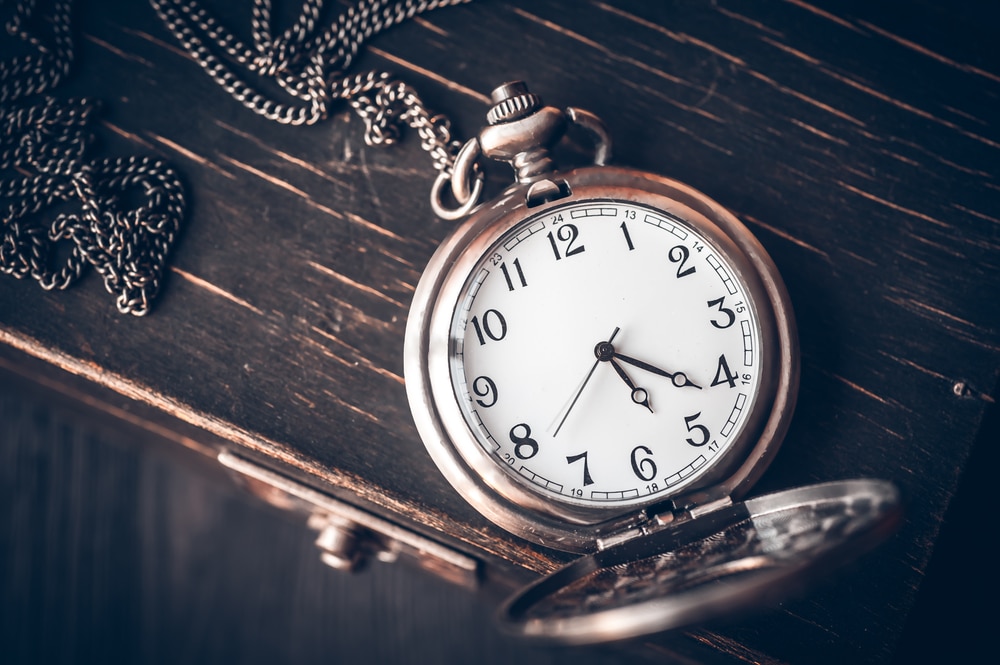
How do you know when, or even what, to buy? First off, it’s a good idea to visit some watch forums to determine what pieces are currently popular. Rolex Forums, WatchUSeek, and TimeZone are three good ones. When browsing pay attention to: asking prices, which pieces are selling, where they’re being sold, and for how much. Pay closer attention to completed sales rather than just sale listings as they provide a gauge of what is actually selling.
Most watch dealers, online and physical, buy at about 70% of the true value of a piece. This percentage falls if a watch was acquired away from an authorised dealer, is without documentation, or if it shows wear. You should try and operate your dealings somewhere close to this percentage.
Start by making some fictional investments; pretend to be buying a watch, wait a week, then check selling prices – did you make a profit or not? Doing this will give you a great idea of what’s currently selling and will prepare you for making your first investment. To make money in collectables, buying and selling at the right time is key – leaving yourself a financial cushion gives you the option of patience and allows you to wait for the optimum time to sell.
Practicing with brands that have a smaller price per unit (names like Omega and Tag) gives you the space to make mistakes and learn. As you become more confident you can move on to bigger brands. Certain brands sell better than others as their names signify high end pieces and quality workmanship; Audemars Piguet, Cartier, Hublot, Jaeger-LeCoultre, Panerai, Patek Philippe, Rolex, and Ulysse Nardin. These big brands command a high price tag but consistently appreciate better than cheaper ‘boutique’ watches. Steer clear of buying anything that isn’t original, is in poor condition, or is heavily restored. These unadulterated pieces are what the majority of buyers want.

As when trading with any vintage collectables, condition is of upmost importance, and here perhaps more than in others as a watch’s condition is representative of its functionality. Unless you can fix them, it’s important to buy only working pieces. The alternative is paying for a service for minor repairs or, in the case of valuable vintage watches, paying to have a restoration taken out.
A watch’s glass (or crystal) can be replaced cheaply and easily, so scratches are ok. Replacing other parts can get much more complicated. The watch’s crown (the dial on the outside of the body that is turned to adjust the time or to wind) is one particular area to look out for wear. As a handled part it’s likely to see wear but it can be replaced with relative ease, although it’s worth noting that even this basic work can affect the inner workings of the watch. Heck, normal wear can cause sweat to eat away at the strap or bracelet. Even just polishing can wear down an angular casing.
When purchasing a watch, like when buying a car, it’s important to get a full service history. Watches without this documentation have less value as their true condition is much harder to ascertain. This is a delicate commodity we are attempting to trade in, and we are purchasing second, or third hand. What counts primarily is the quality and condition of the piece, its unique style or history comes second.
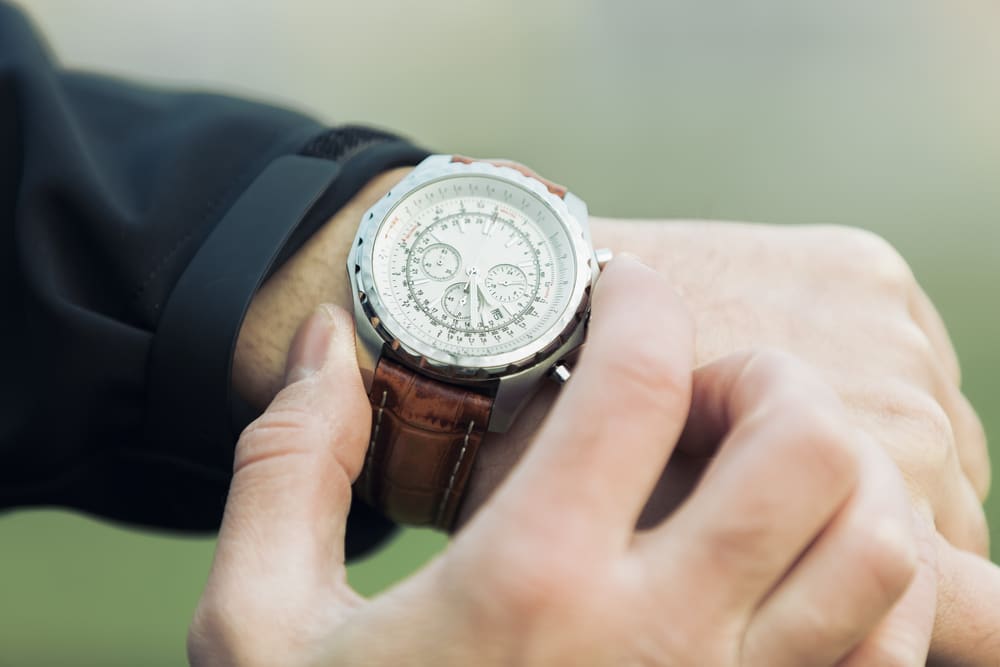
Although you’re more likely to find an under-priced watch in person, the internet is an invaluable resource. It’s a stockpile of watches to buy from and a huge number of people to sell them to. But it’s dangerous. Unless you’re completely confident about who you’re dealing with (and you shouldn’t be unless you’re dealing with an established business) buying watches online should be avoided.
Not trading exclusively with reputable online dealers could leave you severely out of pocket; fakes, watches that have been poorly looked after, and pieces with unknown or falsified origin. The biggest possible loss you could take when buying and selling watches is purchasing a fake piece and paying the real price for it – this represents a 100% loss of investment. There are definitely some great bargains to be had on genuine watches, just, when operating online, it’s best to ere on the side of caution. As a general rule of thumb, if a deal is too good to believe, it usually is. Here are some reputable sites you can have confidence in:
Is it possible to make money buying and selling second-hand watches on eBay? Generally the sellers who trade successfully on eBay buy watches in poor condition, needing significant repair, and do the service themselves. They buy watches with dirty dials, do a refinishing, and then polish the case. They have a trade to ply. Seamaster147 markets himself as an ex Omega worker, giving himself a sense of legitimacy and competence meaning that he consistently sells Omega watches at high prices. He has a reputation, people have trust, and you’re not a horologist.
You can’t offer a service, so what about simply buying and re-selling mint watches on eBay? A member of the forum WatchUSeek describes the process:
‘Over the last few months I have bought and sold a number of watches on eBay, mostly Omega, some Seiko. I added up what I paid, minus the eBay fees, and I make a grand total of about £30! Some watches I made over £100 on mostly Seamasters and CAL 565 Geneves, others I lost on as they turned out to be slightly faulty, and repairs needed to be made.’
With eBay and PayPal fees so high (and no security operating outside of them), you have to sell at a margin of at least 10% to break even. eBay is a very efficient market, this 10% just isn’t going to happen unless you have a service to offer, or reputation to capitalise on. Plus, there’s a lot of opportunity to make mistakes and lose money. You are unlikely to make a profit by just buying and reselling exclusively on the site. However, it is a resource; a fine place to sell mint watches.
While all people have access to the online market, only you have access to your local market. Even if you don’t have any specialised second-hand watch dealers near you, head out to your local jewellers, car boot sales, auctions, house clearances, antique shops, markets… Buying watches in person lets you to barter face to face. It allows you to build a relationship with the person you’re buying from. It’s easier to knock a few percentages off for someone you know, a friendly smile, or a bit of rapport. It’s also clearer when someone is lying to you. All in all, you’re more likely to find under-priced bargains face to face.
However, for consistency’s sake, auction rooms often represent the most convenient route of acquisition for modern and vintage pieces. When selling, many auction houses will offer a free valuation from their specialists. This can usually be done in person, or via email. In terms of international auction houses, one couldn’t look further than these big names: Bonham’s, Christie’s, and Sotheby’s. Smaller UK local auction houses, such as Cornwall’s Dutchy Auction House and London’s Watches of Knightsbridge, also consistently sell vintage watches.
Everyone out there recommends that at your first time at auction, you go without the intention of bidding. Initially, go simply to get a sense of what goes on at auction. When you’re ready to bid, make sure you’ve read up on the auction house’s terms and conditions. There are rarely any returns if you buy from auction and descriptions must be accurate when selling as they are legally binding. Learn about the buyer’s premium – a percentage added to the hammer price – and the seller’s commission – the percentage of the sale taken by the auction house.
If you find the prospect of buying from auctions daunting we’d recommend second-hand and vintage watch dealers. These people will be experts and whatever you’re buying from them will be quality. Catch them in a good mood and they’ll undoubtedly be a source of a lot of knowledge as well. Most dealers give a year’s warranty. Many will even buy back watches you’ve bought from them, which is useful to know if you need to sell out or have second thoughts on an investment. It’s worth noting that most dealers specialise in certain brands. So, if you were thinking about investing in some Omega watches it would be a good idea to get in contact with a specialist dealer and ask their expertise. Chrono24’s directory of watch dealers is an invaluable resource.

Put simply, buy in person and use the internet to sell. While the online market is the most easily accessible, it’s also the place with the least amount of deals and the greatest number of scams. Use the internet for what it’s good at; providing information, and selling. The higher likelihood of finding bargains in person means there’s certainly profit to be made by acquiring under-priced stock locally. Buy watches for 70% in person, then re-sell online for their true value. There’s money to be made buying and selling second-hand watches, if you’ve got the time, and know where to look.

As a collector, I appreciate brands that balance design, mechanics, and identity. Coveted does a great job showcasing this through collections like the sporty yet refined Czapek Antarctique and the classically inspired Czapek Quai des Bergues. On the independent side, the clean execution of the S.U.F Helsinki 180 and the rugged charm of the S.U.F Helsinki Vetehinen really stand out.
A very informative article on the subject.